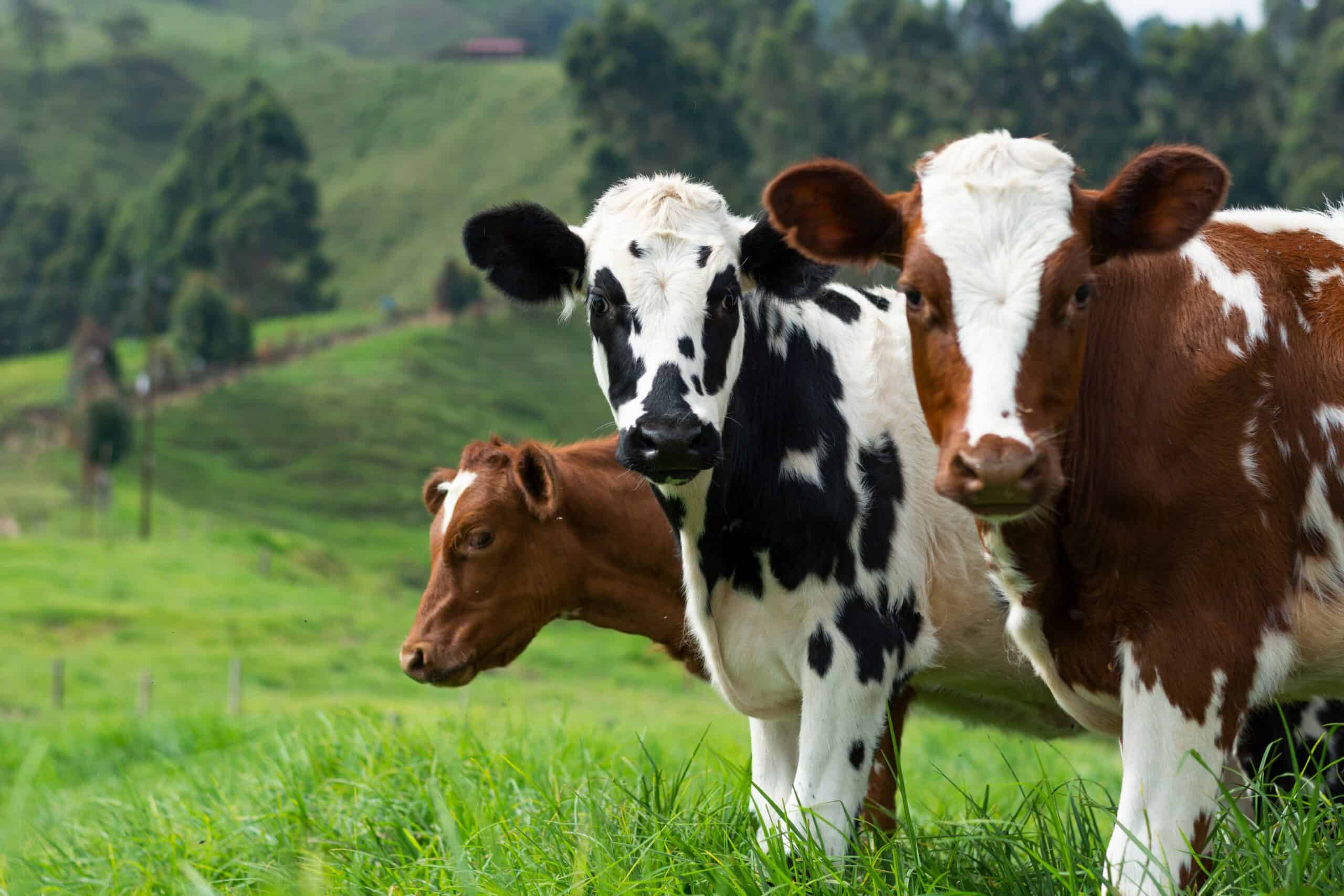Cows are domesticated mammals raised primarily for their meat, milk, and hides. Raising cattle can be a profitable and sustainable source of income for farmers and ranchers. Here I explain how much does a cow cost along with factors to consider that affect the price.
The cost of buying a cow varies depending on age, weight, cow breed, gender, purpose, and location. Prices range from a few hundred to several thousand dollars. Bulls cost more than cows. Beef cows typically cost more than dairy cows.
For example, a young beef cow intended for meat production can cost $800 and $1,200, while a mature breeding cow of the same breed can cost $1,200 to $2,500 or more. Meat cows are priced based on weight. Fully finished beef steers can cost $4,000 – $5,000.
Dairy cows are generally less expensive than beef cows, with prices ranging from $1,500 to $3,500 or more for a mature breeding cow. Dairy yearlings (calves between 1 – 2 years old) can cost $800 to $1,500. A producing dairy cow will cost more than an older dairy cow.
Other cow price ranges include slaughter cows ($800 – $1,200), slaughter heifers ($1,000 – $1,400), steer calves ($500 – $1,500), steers ($1,000 – $2,500), and bred cows ($1,500 – $2,500).
It’s important to note the cost of a cow is just the beginning. In addition to the price for the cow itself, there are other expenses associated with raising cattle: feeding, veterinary care, labor, and other expenses.
How Much Does a Cow Cost
Cows are an important livestock for meat, milk, and other dairy products. Depending on your needs, you may be interested in purchasing one of several categories of cows. These are examples of types of cows that people may purchase for various purposes.
- Bulls: Male cows used for breeding
- Cow-calf pairs: A cow and her calf sold together
- Replacement heifers: Young female cows that are not yet bred, but are intended to replace older cows in the herd
- Heifer bull: A bull mated to heifers
- Herd bull: A bull mated to cows
- Stocker calves: Young calves that are purchased and raised for a short period of time before being sold as feeder cattle
- Feeder cattle: Cattle that are sold to feedlots or other operations to be fattened up for slaughter
- Beef cows (including steers and heifers)
- Dairy cows (including cows and heifers)
- Calves (including steer calves and heifer calves)
- Steers: Castrated male cattle used for meat production
- Slaughter cows (including cows and heifers)
Cost for Steer Calves vs Steers
Each category has different prices and factors which influence the cost of buying a cow. While steer calves can cost $155 per one hundred pounds (called hundredweight), steers can cost $140 per hundredweight. The price per pound for the steer is less, but the overall cost will be more because the mature steer weighs more.
Costs for Heifers and Cows
A cow is a female bovine who has given birth to at least one calf. A heifer is a female bovine who has not birthed a calf. In general, cows cost less than heifers.
Dairy cows who are producing at their peak age which is between years 6 and 8 years old cost between $800 – $3,000 while older dairy cows with less milk production and milking frequency may cost between $800 – $1,500.
It’s important to consider the costs in heifer development and whether you will be using a heifer bull combined with artificial insemination (AI) to grow your herd. AI has a 65% conception rate and adding a bull raises it to 90%. The price per head (new calves) goes down by the number of calves born each year. More heifers equals more calves.
Consider any returns you may see from selling the heifer bull after around two years of service because he’s grown too large to breed heifers.
How long is a cow pregnant ~ Pregnancy in heifers and cows
How Much Do Cows Cost
There are price differences for raising beef cattle or dairy cattle. Another consideration is if you want to start with raising calves or mature cattle. Decide your goals, budget, and if you have time, energy, and patience to raise young calves or the ability to hire someone to do it.
How Much Does It Cost to Buy a Beef Cow
The cost of a beef cow depends on various factors, including age, weight, and whether it’s a heifer, bred heifer, or full-grown cow. Beef heifers typically cost around $2,500 to $3,000 per head, with an average price of $2,800 per cow.
The price of a calf is usually based on its weight, with cows priced in CWT (100-pound units). The average CWT for a beef cow is between $135 and $165, which translates to an average of $140 per 100 pounds. For instance, a 500-pound calf would cost about $700.
Bred heifers cost around $1,300 to purchase, which is a little more than 1.5 times the cost of a heifer. Meanwhile, full-grown cows can cost between $3,000 and $5,000 per cow, with some weighing as much as 2,200 pounds and commanding prices of up to $1.85 CWT. Other common prices include $800 for a calf, $2,000 for a heifer-calf combination, and $3,000 to $5,000 for a full-grown beef cow.
Types of Beef Cows
Here are some of the most common types of beef cattle raised on farms:
- Angus: One of the most popular beef cattle breeds in the United States, known for its smaller, compact size, marbled meat and high carcass yield (good meat-to-bone ratio).
- Brahman: Efficient grass-to-beef conversion; quality meat; used for breeding
- Charolais: Hardy, adaptable French breed known for high quality meat
- Hereford: Hardy, good temperament, with marbled meat
- Scottish Highland cattle: Hardy, high quality meat
- Limousin cattle: Excellent feed conversion, they are good mothers and offer high red meat yield
- Red Angus: A variation of the Angus breed, known for its reddish coat and excellent meat quality.
- Shorthorn cattle: Good feed conversion; tender meat with good marbling
- Simmental: A Swiss breed known for its heavy and lean carcasses and excellent meat quality; often used in crossbreeding programs.
- Texas Longhorn
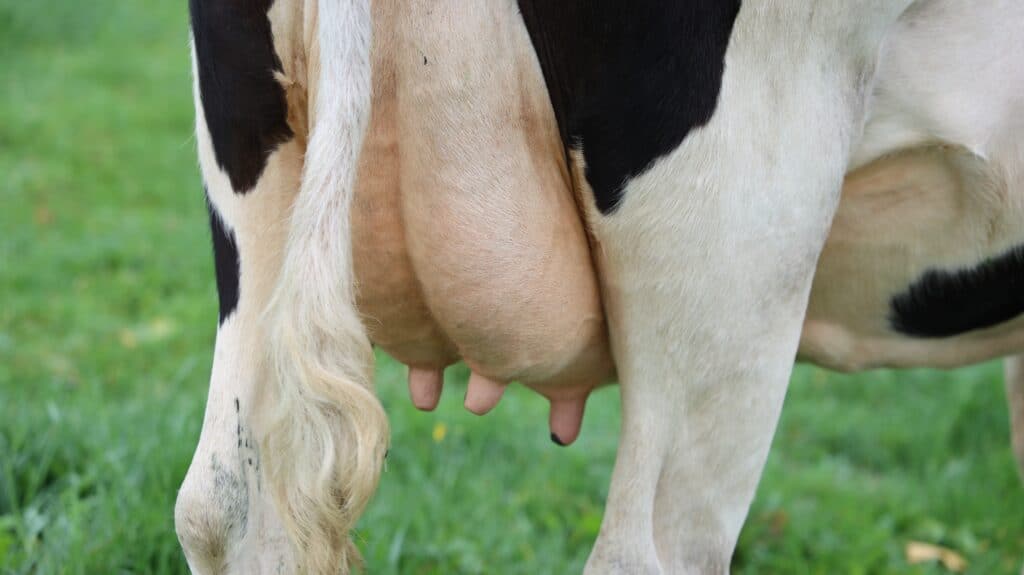
How Much Do Dairy Cows Cost
The cost of a dairy cow can vary widely, depending on factors such as age, breed, and whether the cow is hand-raised or bottle-fed. On average, a dairy cow can cost anywhere from $900 to $3,000.
Calves and yearlings are generally less expensive to purchase than full-grown cows, and cows that have been hand-raised or bottle-fed will often cost more due to their people-friendly nature.
Jersey cows, for example, can cost approximately $1,400 to $1,800, while cows sold by weight typically range between $1.05 and $1.35 per pound. Heifers are generally less expensive than bred cows, with prices ranging between $500 and $1,000. Lactating dairy cows usually cost between $1,500 and $2,100.
Keep in mind, mini dairy cows are also desirable for small family farms. They require less food and have less milk to express. This can make them more manageable for small scale cattle operations. Though they weigh less, their smaller size is an asset; they can cost more than their full-size counterparts.
Mini milking cows: What Are Small Breed Milk Cows?
Dairy Cow Breeds to Consider
- Brown Swiss cattle
- Dexter: Dual purpose; can be used for milk and meat
- Guernsey cattle: Ideal for small family farms and hand milking.
- Lakenvelder cattle: Easy calving; can be used for meat
- Holstein
- Jersey cattle
How many udders does a cow have ~ Answers about teats
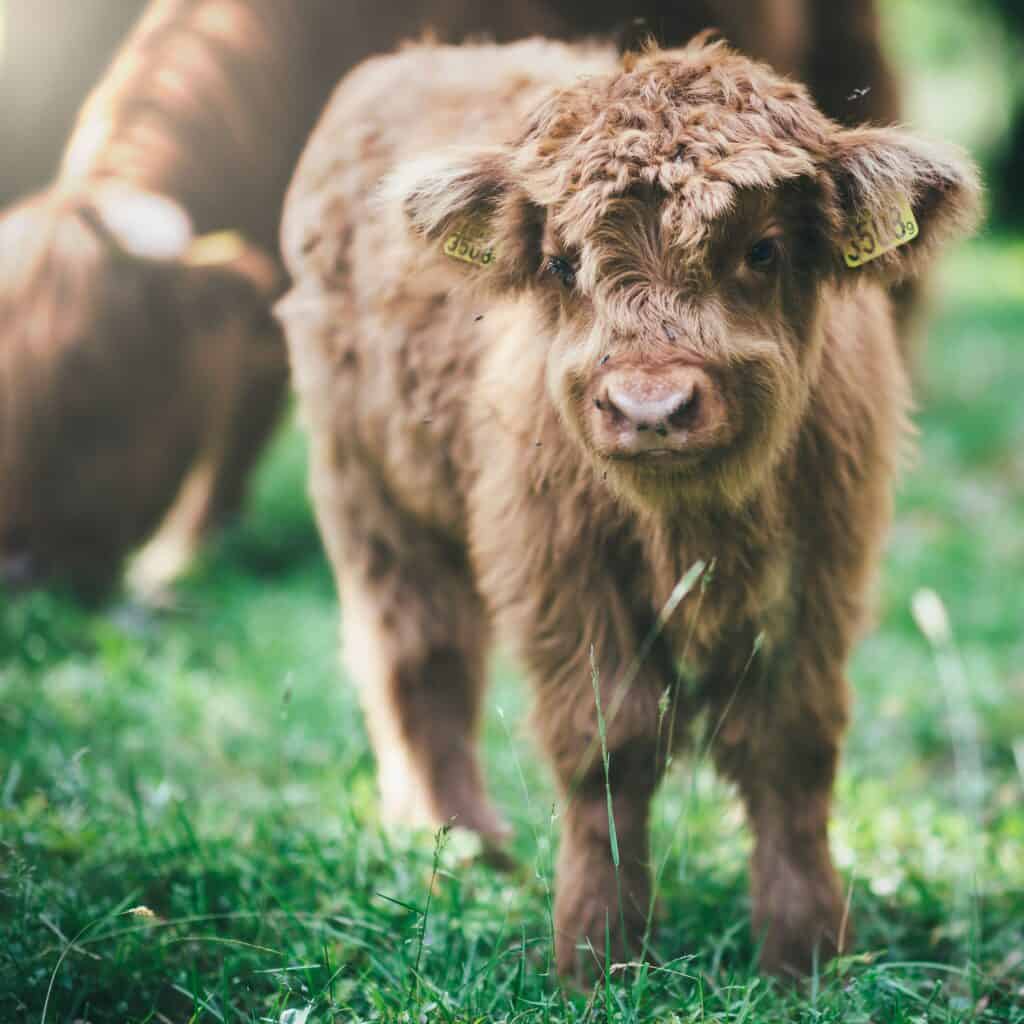
How Much Do Baby Cows Cost
The cost of baby cows, also known as calves, depends on several factors, including age, breed, gender, and purpose. Bottle-fed day-old calves can cost between $35 and $60 per calf, but have a higher mortality rate with approximately half of the calves dying.
Consider the costs of feeding the calves milk or milk replacer when factoring in the initial costs.
Short yearlings, which are calves between 12 – 18 months old, are more stable and will cost more than younger calves. Long yearlings, which are calves between 19 – 24 months old, are even more stable and can command an even higher price.
Beef yearlings can cost between $750 and $900+ per calf, while dairy yearlings can cost less: $450 and $600 for a calf. Older calves will cost more based on weight, with beef yearlings averaging around $825 and older calves costing $800 and $900 depending on their weight.
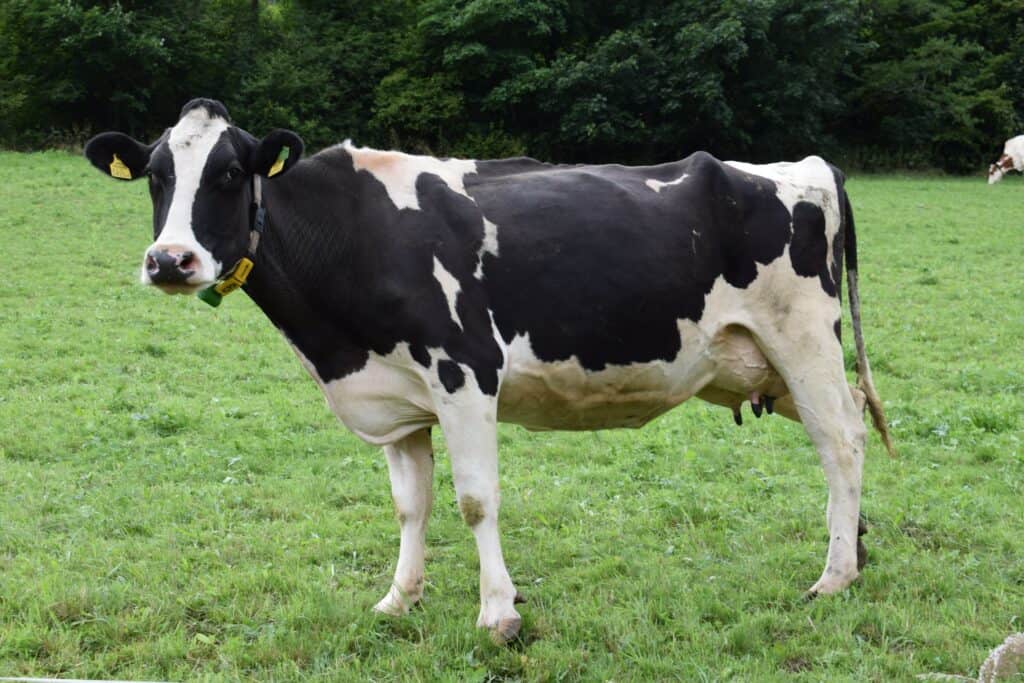
What Determines the Cost of a Cow
Several factors influence the cost of buying a cow:
- Miniature cows vs regular size: Miniature dairy cows can cost more than regular size because of high demand for being more manageable and desirable for small farms.
- Age: Younger cows tend to be less expensive than older cows because they require more time to mature and become productive.
- Gender: Males (steers, bulls) are usually more expensive than females (heifers, cows).
- Breed: Certain breeds are more in demand than others, which can influence the cost of buying a cow.
- Purpose: Cows intended for breeding or meat production may be more expensive than those intended for milk production.
- Whether it’s proven: Dairy cows who have already produced milk
- Geographic location: The location where the cow is being sold can influence its cost. Cows in regions with high demand will generally be more expensive than those in regions with lower demand.
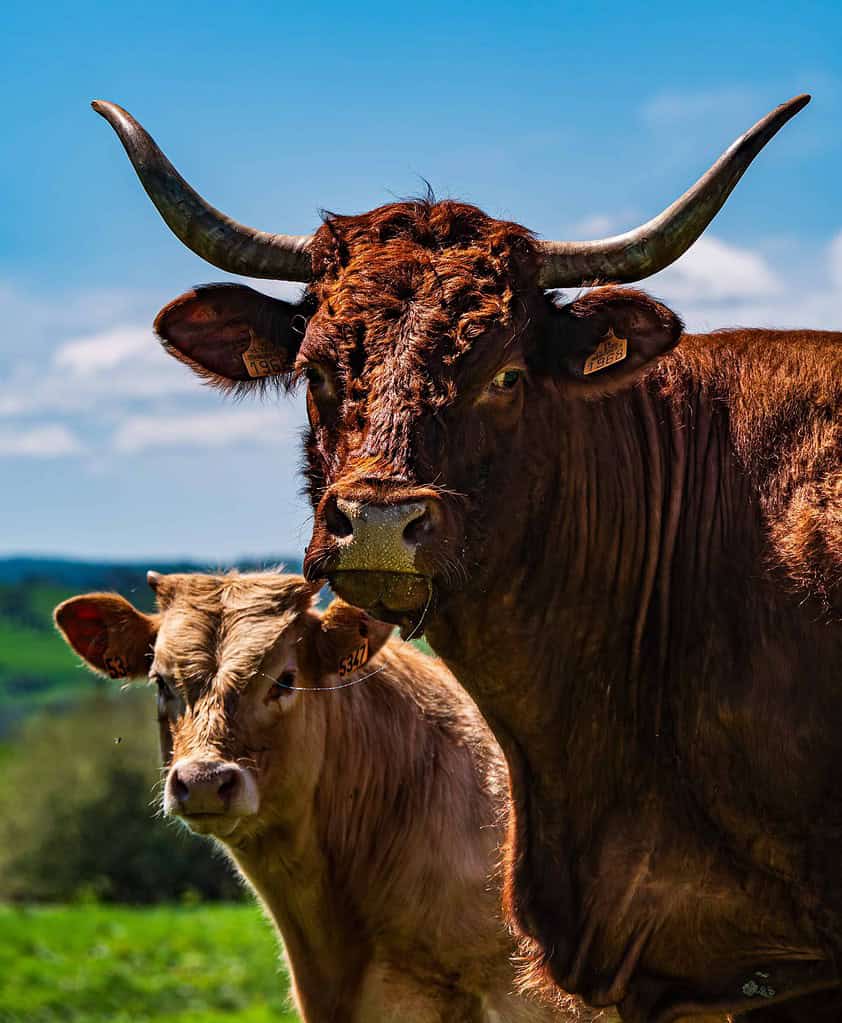
How Much Do Cows Cost to Raise
If you are considering adding a cow or cattle to your farm, there is more consider than how much a cow costs. The cost of buying a cow is just the beginning of the expenses associated with raising cattle.
The cost of feeding and raising a cow can also be significant — around $1,000+ a year — for feed and supplements, veterinary care, labor, and miscellaneous expenses. Breeding costs and butchering costs are also associated expenses when adding up how much a cow costs to raise.
Consider:
- Feed and supplements
- Veterinary care
- Labor
- Miscellaneous expenses
Feed
The cost of feed and supplements can vary depending on the type of feed used, and the nutritional needs of the cow. If you are bottle-feeding newly-purchased calves, you’ll need to factor in getting milk or milk replacer.
Another consideration is the quality of pasture available and how much acreage has suitable pasture for grazing. This includes the quality of grasses, legumes, clover, and alfalfa on the pasture, and the amount of hay needed for supplementation. The better the pasture quality and the larger the grazing area available, the lower the supplemental feed costs.
Some breeds are very feed efficient; some are smaller and require less feed; and some do well even on poor forage.
Also consider your climate and how cold winters get. Will your herd be able to graze or will need to supplement with additional hay, etc.? This will add to the expenses.
Medical care
Veterinary care is necessary to keep cows healthy and productive, and can include vaccinations, deworming, breeding treatments (AI), and treatment for injuries or illnesses.
Who is doing the work?
Labor is also a significant expense, as cows require daily care, such as feeding, watering, and cleaning their living spaces. If you start with calves that aren’t weaned, they will need to be bottle fed. If raising dairy cows, the labor to milk them needs to be accounted for.
Equipment
If you are just starting out raising cows, there will be expenses such as watering systems or watering tubs, feeders, fencing, and shelter as well as any equipment, repairs, etc.
Protein tubs for cattle ~ Purpose, pros and cons, and more
Where to Buy Cows
Seasonal fluctuations in demand can cause the price of cows to rise or fall depending on the time of year. The market price of cows can vary depending on several factors, including seasonal fluctuations, cattle auctions, and online cattle sales.
Check online for local farmers to buy directly from a farm or ranch.
Cattle auctions are a common way to buy and sell cows. The price of cows at auctions can be influenced by several factors, including the number of cows for sale, the demand for cows, and the condition of the cows.
Online cattle sales have become increasingly popular. Online sales can be influenced by factors such as geographic location, breed, and age.
How Much Does It Cost to Buy a Cow
Factors such as age, breed, purpose (dairy vs beef), demand, and location can all influence the cost of buying a cow.
For buyers, do thorough research on the different types of cows available, along with their specific purposes and traits. This can help buyers make informed decisions when purchasing a cow and ensure that they get the most value for their money.
Ask around and research the reputation of whoever is selling the cows. Have some fun looking up creative and fun cow names for your herd.
Buying a cow can be a big investment, but it can also be a rewarding one for those interested in raising livestock. Whether for meat production, milk production, or breeding, cattle can provide a valuable source of food and income for farmers.
It’s important to carefully consider all factors when buying a cow and to always prioritize the health and well-being of the animal.
Fly control for cattle ~ 4 methods
Featured image credit: Daniel Quiceno M, Unsplash

